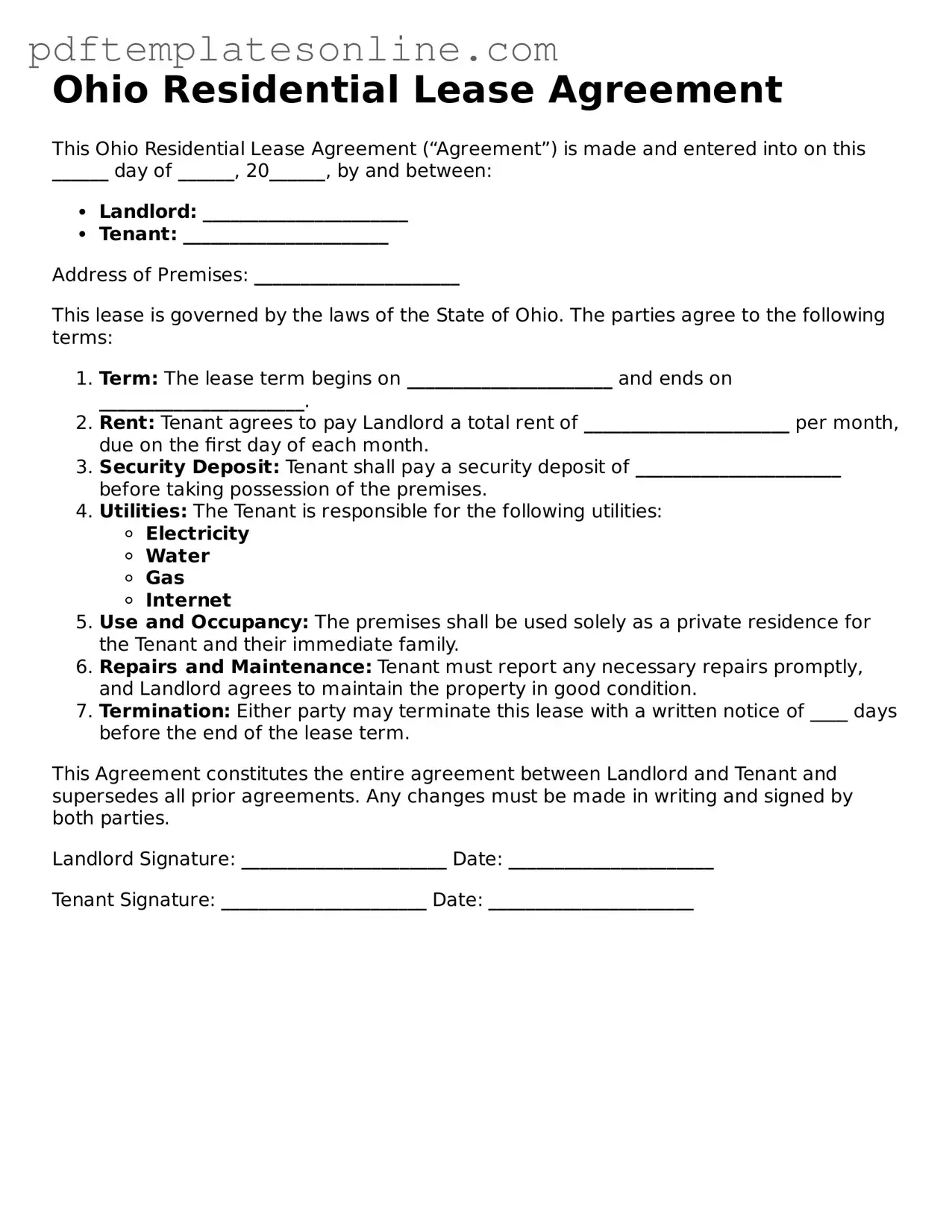Detailed Guide for Writing Ohio Residential Lease Agreement
Filling out the Ohio Residential Lease Agreement form is an important step in establishing a clear understanding between landlords and tenants. This document outlines the terms and conditions of the rental arrangement, ensuring that both parties are on the same page. Here’s how to complete the form effectively.
- Gather necessary information: Before you start, collect all relevant details such as the names of the landlord and tenant, property address, and lease duration.
- Fill in the landlord's information: Write the full name and contact information of the landlord at the top of the form.
- Enter tenant details: Provide the tenant's full name and contact information in the designated section.
- Specify the rental property: Clearly state the address of the rental property, including any unit or apartment number.
- Indicate the lease term: Fill in the start date and end date of the lease, ensuring it reflects the agreed-upon duration.
- Set the rent amount: Clearly specify the monthly rent amount and the due date for payment each month.
- Outline security deposit details: State the amount of the security deposit and any conditions for its return.
- Include any additional terms: If there are any specific rules or conditions (like pet policies or maintenance responsibilities), add them in the appropriate section.
- Sign and date: Both the landlord and tenant must sign and date the agreement at the bottom of the form to make it official.
After completing the form, make sure both parties retain a signed copy for their records. This will help avoid any misunderstandings in the future and create a solid foundation for the landlord-tenant relationship.
